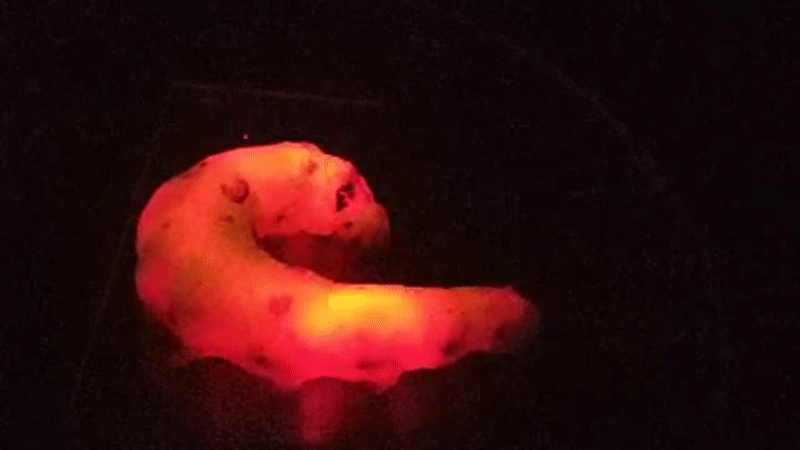Insects
First U.S. Open-Air Test of Genetically Modified Mosquitoes Deemed a Success
Biotech firm Oxitec engineered the bugs in an effort to curb their numbers and help stop the spread of disease
Scientists Identify 50,000th Spider Species on Earth—but Thousands More Are Waiting to Be Discovered
A new kind of jumping spider discovered in South America marks the major milestone
The Quest to Find the World's Largest Bee
The rediscovery of Wallace’s giant bee uncovers disheartening truths about the tenuous fate of hidden insect species
A Killer Fungus Is Annihilating Invasive 'Crazy Ants' in the United States
Entomologists are hopeful the pathogen could slow the insects' spread through the country
Why a U.S. Company Plans to Release 2.4 Billion Genetically Modified Mosquitoes
The insects, created by biotech firm Oxitec, will be non-biting males engineered to only produce viable male offspring, per the company
Scientists Are Using Sex Pheromones to Lure in Murder Hornets
The method may be the best way to eliminate the insects from non-native habitats
These Spiders Hunt in Packs to Catch Prey Hundreds of Times Their Size
New research reveals how some arachnids use a coordinated stop-and-start approach to find a meal
Science Twitter's 'InverteButt Week' Puts Backsides on Display
The behinds of spineless organisms are diverse among species and serve a multitude of purposes beyond expelling waste
How Carnivorous Plants Evolved
Botanists are beginning to trace the origins of their gruesome appetites
Silkworms Fed Quantum Dots Shine Bright Under Ultraviolet Light, Produce Fluorescent Red Silk
Caterpillars that ate carbon dots derived from mulberry leaves glowed a scarlet color that lasted until the second generation of worms
Invasive Insect Gets a New Name: Spongy Moth
After removing the common name "gypsy moth," which contained a racial slur, the Entomological Society of America has assigned a new designation
Rash-Causing Moths Are Spreading in Maine Because of Climate Change
The outbreak of browntail moths in the state will likely grow worse as temperatures increase, researchers say
The Bug That Saved California
The Golden State’s citrus industry faced a lethal threat. The solution would herald a new kind of pest control
Ten Scientific Discoveries From 2021 That May Lead to New Inventions
From nanobots to cancer treatments, nature inspires a wide variety of innovations
DNA Preserved in Lice Glue Reveals South American Mummies' Secrets
Remarkable samples from an ancient culture offer scientists a promising new way to study the past
This Ancient, Nine-Foot-Long, 100-Pound Millipede Could Be the Largest Invertebrate to Ever Live
This critter roamed Earth around 326 million years ago, and it's genus survived for 45 million years
The Creepy, Crawling History of Insect Art
Through history and across cultures, bugs have inspired artists and challenged viewers to shift their perspective
Finally, a Millipede That Actually Has 1,000 Legs
The title is often a misnomer, with many species falling hundreds of appendages short of a thousand. With 1,306 feet, this new insect lives up to its name
As Wetland Habitats Disappear, Dragonflies and Damselflies Are Threatened With Extinction
The first global assessment of the insects revealed that more than 950 species are at risk for extinction
See Microscopic Butterfly Wing Scales Materialize Inside of a Chrysalis
The study is the most detailed look at the structures to date and could be used to design new materials
Page 7 of 33
:focal(350x235:351x236)/https://tf-cmsv2-smithsonianmag-media.s3.amazonaws.com/filer_public/d5/a3/d5a3ae2e-0e79-4b35-bc93-3b0a8bdd480c/9534_lores.jpeg)
:focal(1162x775:1163x776)/https://tf-cmsv2-smithsonianmag-media.s3.amazonaws.com/filer_public/a7/a0/a7a0b2fa-de95-4198-a453-8c8cfd86121a/female_frontal.jpg)
:focal(800x602:801x603)/https://tf-cmsv2-smithsonianmag-media.s3.amazonaws.com/filer_public/e4/b9/e4b92317-1b7b-4300-89d6-b9612a65e537/wallaces-giant-bee_alexis-rockman_web.jpg)
:focal(453x332:454x333)/https://tf-cmsv2-smithsonianmag-media.s3.amazonaws.com/filer_public/6a/60/6a6031d4-6c95-4067-afd8-07580505d993/crazy_ant_4-1024x615-alexwild.jpg)
:focal(1872x1406:1873x1407)/https://tf-cmsv2-smithsonianmag-media.s3.amazonaws.com/filer_public/64/5f/645f6a6f-ef63-4f00-890b-222046a0a7b4/gettyimages-1139947549.jpg)
:focal(1524x670:1525x671)/https://tf-cmsv2-smithsonianmag-media.s3.amazonaws.com/filer_public/ad/64/ad6407bf-f721-4322-be27-66792d0d32f1/male_vespa_mandariniadsc_1515.jpg)
:focal(757x598:758x599)/https://tf-cmsv2-smithsonianmag-media.s3.amazonaws.com/filer_public/bd/d0/bdd02469-981f-4c2d-bc08-c794a35d0e39/1514px-social_spider_anelosimus_eximius_25302060747.jpeg)
:focal(1134x857:1135x858)/https://tf-cmsv2-smithsonianmag-media.s3.amazonaws.com/filer_public/ea/af/eaaf54ad-c558-47e6-b5ce-ecc5290637e9/41694106690_4d8b53e579_o.jpg)
:focal(800x602:801x603)/https://tf-cmsv2-smithsonianmag-media.s3.amazonaws.com/filer_public/da/cc/dacca12d-90fd-4a79-91f1-75537fe145ff/gettyimages-921684180_web.jpg)

:focal(384x257:385x258)/https://tf-cmsv2-smithsonianmag-media.s3.amazonaws.com/filer_public/b2/56/b25698b9-0231-4566-9742-2ebc7f92ea4b/adult-lg.jpg)
:focal(2736x1824:2737x1825)/https://tf-cmsv2-smithsonianmag-media.s3.amazonaws.com/filer_public/a3/11/a3118753-5fc8-4ebd-9e36-b1f92838cf9d/image_from_ios.jpg)
:focal(600x451:601x452)/https://tf-cmsv2-smithsonianmag-media.s3.amazonaws.com/filer_public/b5/5a/b55a2385-ba2f-4909-a75f-8a5f5b1be0bd/field.jpg)
:focal(400x267:401x268)/https://tf-cmsv2-smithsonianmag-media.s3.amazonaws.com/filer_public/ee/07/ee077f30-06f7-4bf7-96b9-27b5c86a336c/20-july_shark-intestines-tesla-valve.jpeg)
:focal(586x441:587x442)/https://tf-cmsv2-smithsonianmag-media.s3.amazonaws.com/filer_public/87/93/87938dae-0de6-4bde-8d97-8be82c6b2929/ansilta-approx-2000-yo-adult-man-2_web.jpg)
:focal(580x301:581x302)/https://tf-cmsv2-smithsonianmag-media.s3.amazonaws.com/filer_public/f9/b7/f9b7d628-239e-4891-a4b9-e8783af767b3/1223_millipede.jpeg)
:focal(800x301:801x302)/https://tf-cmsv2-smithsonianmag-media.s3.amazonaws.com/filer_public/1e/7a/1e7a01d7-7fc0-44be-95dc-379f885ba63e/media_insects-art-1600x600.jpg)
:focal(1170x653:1171x654)/https://tf-cmsv2-smithsonianmag-media.s3.amazonaws.com/filer_public/21/0c/210caa5c-123d-4808-993a-93a3b7198eed/merlin_199256478_451f8489-2728-4d19-9071-d54780227714-superjumbo.jpeg)
:focal(400x164:401x165)/https://tf-cmsv2-smithsonianmag-media.s3.amazonaws.com/filer_public/87/bf/87bf8079-6325-420a-bb34-b0c062c23c6e/18https___www_inaturalist_org_photos_3088075.jpg)
:focal(450x300:451x301)/https://tf-cmsv2-smithsonianmag-media.s3.amazonaws.com/filer_public/bd/dc/bddc588e-7746-43e1-bbdc-5d6f6ce387dc/mit-butterfly-growth-01-press_0.jpg)